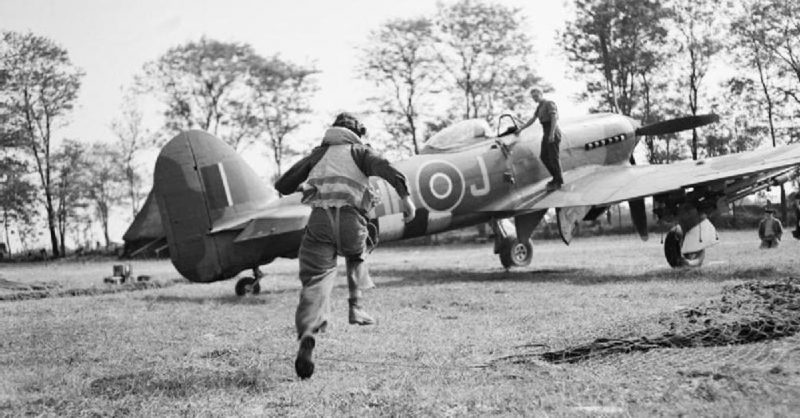After a 70-year absence, the sound and sight of a Hawker Typhoon will be heard in 2024 over England’s skies.
The Hawker Typhoon Preservation Group (HTPG) has that date in mind for the completion of the restoration of a Typhoon Mk1b powered by a Napier Sabre engine. Necessary parts from another Typhoon, serial number RB396, will be used in the restoration project.
Following its completion, the aircraft will be the only one of its type in the world. Part of the rationale for the restoration is the desire of the HTPG to demonstrate that the craft is a living memento to the Typhoon crews who flew them during the invasion of Europe in support of Allied air operations.
Present for the event recently at Boultbee Academy at Goodwood were three former Typhoon pilots, Flt Lt George Wood, Flt Lt Derek Lovell, and Flt Lt David Ince DFC.
During the early 1940s, 3,317 Typhoons were manufactured. RB396 was with No. 83 Group of the Second Tactical Air Force. It survived a forced landing during early spring, 1945.
There are also plans by the HTPG for a memorial and heritage center.
Dave Robinson, the project founder and trustee, has laboured since 1999 to have a flight-worthy Typhoon. The project’s launch is the conclusion of his tenacity and devotion. Two trustees, Sam Worthington-Leese and Jonathan Edwards, became part of the project in recent years. The HTPG has been registered as a charity to sustain future refurbishment.
For Worthington-Leese, restoration is especially close to his heart. His grandfather flew Typhoons during the war. His last mission was not a lucky one. He was shot down by the enemy in European skies and spent the remainder of the war as a prisoner of war.
The estimated cost of the restoration project is £4-6 million, FLYER reported.
The Typhoon was influential in speeding up the Allied victory in German-occupied Europe, said Robinson. How many lives were saved by the Typhoon and the bravery of the pilots and ground crews can only be speculated. But the contribution by the airplane is mostly forgotten.
